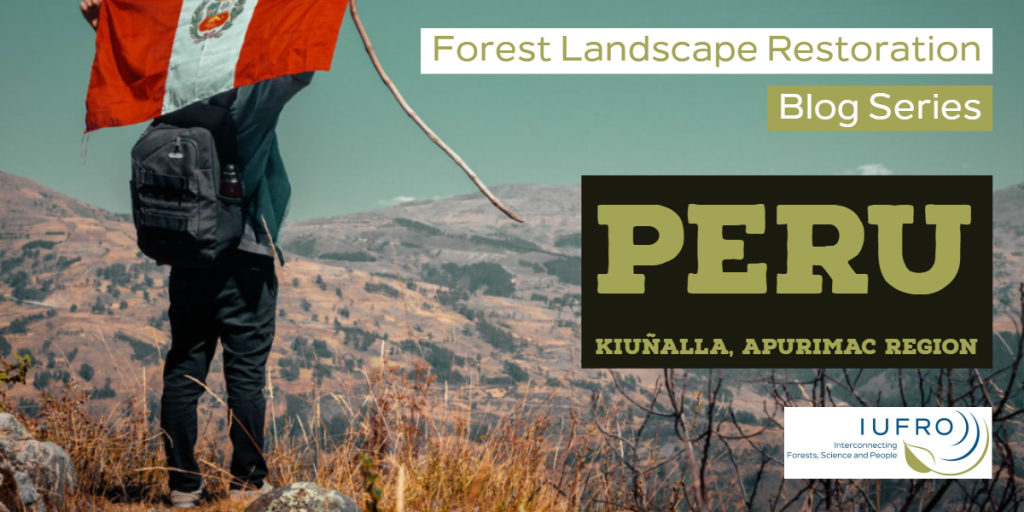In the first blog post of the Forest Landscape Restoration (FLR) Snapshot Series we will focus on the project Forest Landscape Restoration Initiative of the Kiuñalla Community, in the Apurimac Region. Located in the southern Andes of Peru, this region has been one of the first in initiating actions within the framework of the country’s commitment to the Bonn Challenge to restore 3.2 million hectares of degraded areas through plantations for commercial purposes as well as for the recovery of ecosystem functions.

Fragmentation and degradation of the Andean native forest and continuous fires due to the expansion of agriculture led to decreases of water flow, loss of biodiversity, and consequently hindered income generation for local communities depending on subsistence agriculture and complementary activities such as ecotourism and honey production.
As of 2012, the community of San Ignacio de Kiuñalla decided to take action to address the problems of contamination of water sources, the advance of cultivation areas within the forest and the need to preserve the landscape. The community members recognized the need to have cleaner water, the possibility of maintaining forest resources for future generations and the opportunity to have an attractive landscape for a potential community tourism initiative. In a participatory manner, the local community alongside with stakeholders from national, regional and local levels formulated the Community Forest Restoration Plan to benefit more than 300 families. With support from the international cooperation, a restoration pilot was established to serve as reference and learning in the process.
On a pilot area of 105 ha the Plan included the application of assisted natural regeneration techniques, fencing, soil treatment, installation of artificial ponds and planting of native forest species in different arrangements, among others. In addition, community fire brigades were organized as well as training activities on various topics (e.g., recovery of Andean ecosystems with afforestation of native species, and organic honey production from the native forest to bring alternative income to the communities), and the monitoring of the forest development and water flow and regulation (eco-hydrological monitoring).
Despite its short history, the Kiuñalla community restoration initiative has served to generate some lessons in the framework of a process that is participatory by nature and adaptive by necessity. A central message to highlight is that the work approach to address restoration must be broad and inclusive in relation to the other challenges of the community. In that sense, it is important to place the restoration initiative in perspective on the territory, the roles of people, the community and the support institutions. It is also important to identify alternative economic activities that improve local income and that reinforce the collective practice of restoration.
Download the poster, report and learn more about the project:
https://www.iufro.org/science/special/spdc/netw/analysis/#c29515
To find out more about Peru, watch their interview on the side-event Forest Landscape Restoration Implementation: Progress on the Ground during the XXV IUFRO World Congress 2019.
Coming up next…
Mongolia: how to obtain desired results in forest restoration through technology and capacitation.

Posted by Jürgen Hoth on
Very commendable to plant trees where forests existed previously. Unfortunatly this project is also engaged in aforestation, i.e. planting trees at the expense of native grasslands as presented graphically in 0:59 and mentioned several times as “afforestation” efforts throughout the video. Too bad that this level of ignorance still prevails among international and local organizations.
Posted by Restauración del paisaje forestal: Experiencia de Kiuñalla en IUFRO 2019 - Bosques Andinos on
[…] presente nota es un artículo recientemente publicado en el Blog IUFRO: http://blog.iufro.org/2019/12/04/restoring-for-water-the-basis-to-address-forest-restoration/a quienes agradecemos por su apoyo y […]